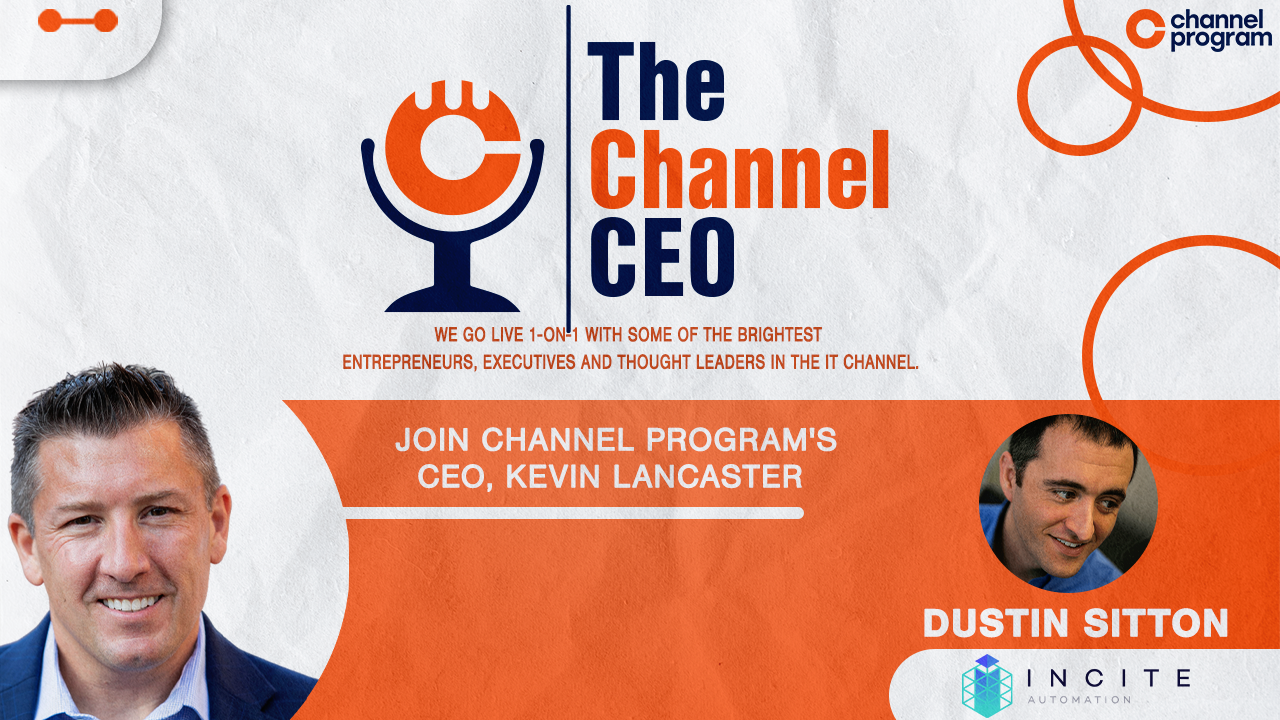Despite the growing popularity of cloud-first software solutions in recent years, many MSPs haven’t fully embraced the cloud-based nature of today’s business culture.

This could soon present significant challenges: MSPs risk an uphill battle if they don’t adopt distributed solutions sooner rather than later.
This was one of the most interesting revelations I took away from a discussion I had with Dustin Sitton of Incite Automation.
If you missed my livestream with Dustin on The Channel CEO podcast, you can watch the full video here:

Don’t miss my next CEO interview TODAY at 10 AM EST 👉 Tune in here!
When speaking with Dustin, I asked him for a piece of advice he had for MSPs looking to scale and grow their businesses.
“I am still consistently surprised at how many first conversations I have with MSPs that are still on the fence about, you know, ‘How much should I go into Microsoft 365 and Office 365 and the cloud in general?’” he said.
“Some of them built up their own private clouds, or are doing a lot of virtualization, and they’re having trouble letting that world go. Meanwhile, the longer that they wait, the more advancement is happening in SaaS products, in the cloud, and they’re missing it. And that hill is going to get tougher and tougher to climb. I see this chasm forming of sort of the haves and have-nots.”
However, leaning into cloud and SaaS solutions is not a simple and straightforward process.
This is why making this shift sooner rather than later is so important. It isn’t something you can pivot to overnight.
Some MSPs see that there is a big opportunity on the SaaS side of things, Dustin said, and they want to bring SaaS and cloud offerings to their customers, but they try to implement these solutions on their own.
MSPs may be tempted to think that, because they were successfully able to implement previous technologies into their business models, they can self-sufficiently standup Salesforce or Microsoft Power Automate, etc.
However, the tech emerging today isn’t as operationally accessible as the tech of the past.
“As I learned when I ran a different company,” Dustin said, “you need different people, different processes—a different approach than an MSP would typically take with upgrading infrastructure.”
Dustin said he’s encountered many an MSP that started out trying to build their own cloud or SaaS infrastructure, only to call Incite Automation in the middle of development for a check and discover they should have probably called someone else in much sooner.
“Think twice about trying to jump into a whole new area like software development all by yourself on day one,” he said. “You might hurt your relationship with some of your existing clients.”
And this isn’t Dustin’s first rodeo.
Dustin was the first Microsoft hire at The Seva Group, a Coldfusion Java shop that was later acquired by Mind Over Machines.
“I was a .net guy and they all made fun of me for being a .net guy,” he said.
But he didn’t get made fun of for long.
“I slowly but surely was like, ‘Listen, .net, the Microsoft side of development, it’s gonna be a thing,’” he said. “And, sure enough, slowly over time, I started to take those Coldfusion developers and bring them over to the dark side and teach them how to develop with what I thought was a better class of technologies.”
So, when Dustin says cloud and SaaS should be bigger concerns for MSPs now, I believe him.
“MSPs are the trusted IT advisors,” Dustin said. “As more and more [enterprises] move to SaaS and products in the cloud, you’re going to be expected to know that information.”
However, likely one of the biggest blockers to MSPs embracing cloud and SaaS more is the ever-present IT skills gap.
“[Customers] ask me, ‘Where do you find these people? Where? How did you do it? We’ve talk to all the recruiters.’” Dustin said in regard to his team of IT experts. “And the answer is always the same: We don’t find them. I can’t either. We make them.”
Rather than trying to hire developers with the unique skillset the market now requires, Incite Automation hires developers who show interest and promise in the industry and trains them for success.
Long gone is the age of being able sit at your desk in a hoodie and code all day, Dustin reflected.
“This style of development is so fast,” he said about software engineering today. “You have to be able to look somebody in the eye and talk, and understand their business, and then go away and do it. The work is so quick now, there’s no prototyping. The prototyping takes as long as the builds. The software itself and these tools are so amazing; it requires a very unique skill set. But those out there with the desire and the soft skills, they’ve got a bright future ahead.”
For MSPs to change with the channel—and vendors, too, for that matter—we need to shift how we think about hiring top talent.
If you want to succeed in the channel with the technologies that are in demand today, you need to accept industry training as a necessary component of cloud and SaaS success.
Watch the full video above for even more insights from my talk with Dustin and, if you’re a channel CEO, let me know if you want to be interviewed next!
Let’s do this.
Kevin
P.S. A lot of awesome stuff is happening over at Channel Program! Check out our upcoming events here or learn more about how we can help you grow in the channel by contacting our Sales team here.
And don’t forget to check out my recent posts to add my upcoming Channel CEO livestreams to your calendar!